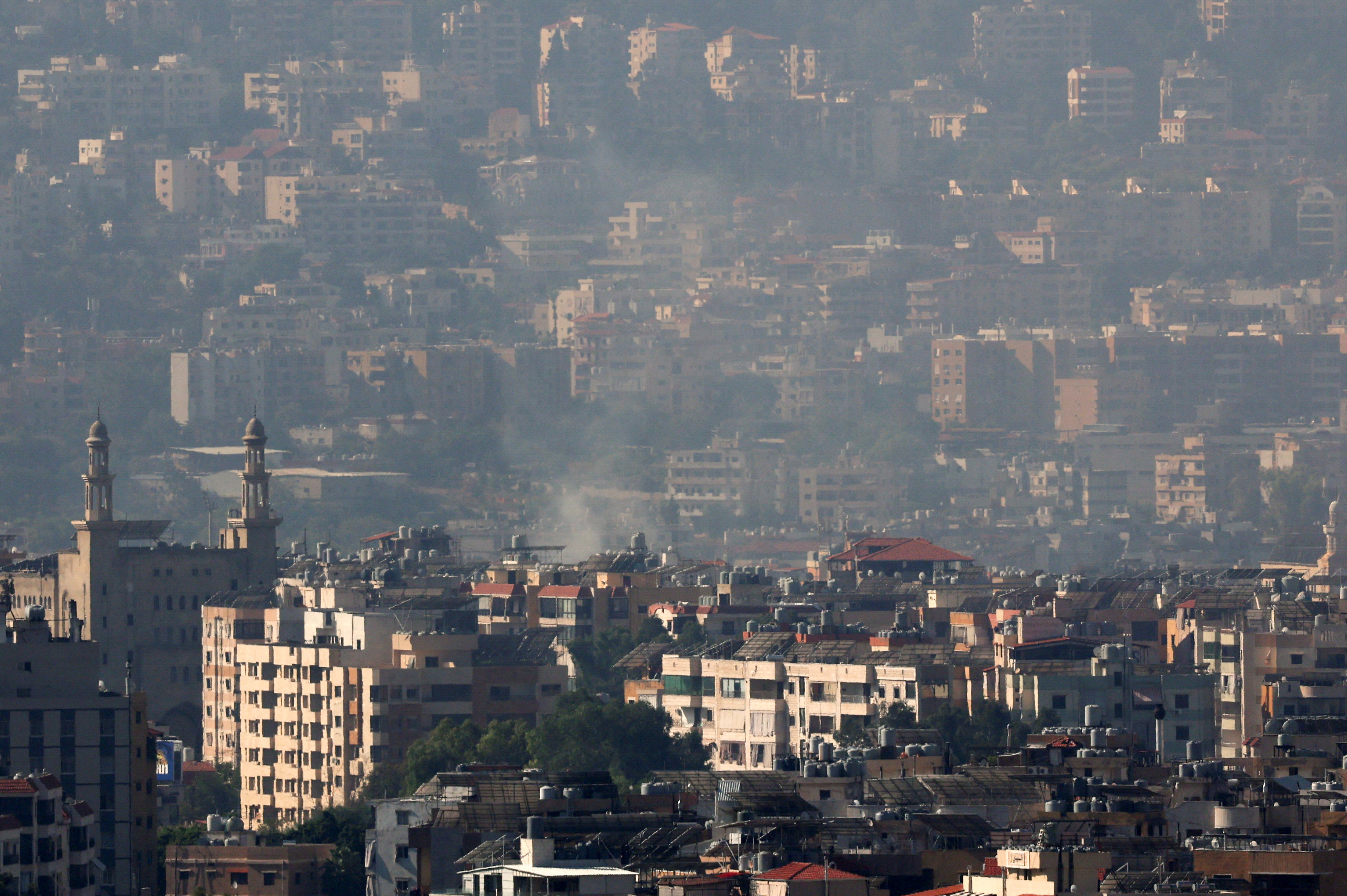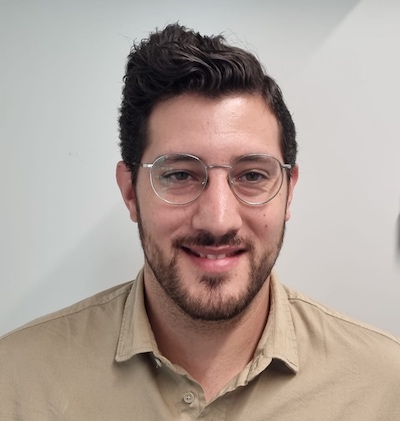‘Hezbollahland’ – the Dahiyeh, capital of Hezbollah’s state-within-a-state in Lebanon
The cramped neighborhood in southern Beirut is Hezbollah's most important base in the country

For many in the West, the mention of “Hezbollah” evokes images of bearded men climbing through a rough landscape with an RPG slung across the back, somewhat like the al-Qaeda fighters in Afghanistan.
However, Hezbollah is a slick, highly organized state within a state, with a trained army that is better equipped than many Western nations; a worldwide smuggling empire trafficking weapons, drugs, and humans; and, like every self-respecting state, a capital – the Dahiyeh.
The word itself only means “outskirts, suburb” but today describes the tangled, cramped agglomeration of five residential neighborhoods between Beirut proper and Lebanon’s Rafic Hariri International Airport.
Since the start of the current war, Hezbollah repeatedly threatened that Israeli strikes in Beirut’s Dahiyeh district would lead to massive retaliation against the Israeli homefront, highlighting its importance.

Today, despite a short break caused by U.S. pressure, the IDF is striking targets in the Dahiyeh with impunity, slowly taking apart the deeply rooted infrastructure of Hezbollah’s main stronghold.
The journey from Beirut toward the Dahiyeh is often described somewhat like crossing into another state – one could call it “Hezbollahland,” like the title of a book by Washington Institute Senior Fellow Hanin Ghaddar.
According to a recent visitor: “Driving south from Beirut’s city center, visitors are greeted by the green and yellow flags of Hezbollah guiding traffic to a solitary Lebanese army checkpoint on the edge of Dahieh. A stark reminder that the country’s official security forces do not venture further into the neighbourhood.”
As Ghaddar explained in her book, “If you stay on the main highway... you will see enormous posters of Iran’s late Islamic Revolutionary Guard Corps Quds Force commander Qasem Soleimani and current Hezbollah secretary-general Hassan Nasrallah… These offer a feel for what lies on the other side of the highway—the base for Hezbollah’s constituency, military power, and ideological strength.”
Its importance to Hezbollah stems from its status as the main urban center for Lebanon’s Shia Muslim population, which forms the core of the group's power.
As an aside, the Dahiyeh also includes the former Palestinian refugee camps of Burj al-Barajneh, and Sabra and Shatila, the site of a massacre carried out by Christian militias while the area was under IDF control in 1982.
The district’s population today is estimated to be between 750,000 and 1 million, including Palestinians, Lebanese Sunnis, and Christians, but the majority are Shia. Hezbollah is at pains to isolate this considerable reserve of manpower and political influence from the broader Lebanese society to maintain its control over them.
“Through services, indoctrination, education, and cultural initiatives, Hezbollah has ensured that very few Shia are exposed to Lebanon’s other cultural and social practices. Indeed, many who reside behind the highway walls have no need to travel elsewhere in Lebanon,” writes Ghaddar.
Hezbollah’s influence becomes obvious when reading recent reports from the area by Western journalists, even if they sometimes try to obfuscate the degree of Hezbollah’s power there.
A recent BBC story, for example, first notes that Hezbollah refused its reporter permission to enter the area – theoretically controlled by the Lebanese state – before arguing that the term “Hezbollah stronghold” doesn’t reflect the totality of the Dahiyeh. But in the very next sentence, it acknowledges that Hezbollah “is certainly the strongest force there.”
In addition to the private homes of the terror group’s senior leaders, the Dahiyeh also holds its most secretive bunkers, like the one where Nasrallah was recently killed, as well as bunkers holding its strategic weapons, large depots and production facilities.
Many of these are buried deep under large, rickety apartment blocks filled with civilians.
“Hezbollah’s military power is based on a wider structure that functions as a parallel state,” writes Ghaddar. “Hospitals, schools, and other social entities are the more apparent institutions, which Hezbollah promotes to show its charitable side. The other part of Hezbollah’s structure – such as its prisons, police force, and intelligence units – remains hidden.”
Several reports over the years suggested that Hezbollah operates a private system of courts and jails, which rarely prosecute party members. In addition, the IDF recently exposed the group’s private banking system, which it uses to finance terrorism, but also serves the Shia community in a country whose official banking system isn’t always trustworthy.
Aside from Hezbollah’s own institutions, the Dahiyeh is also the nerve center in Lebanon of its big patron, the Iranian regime. The Iranian embassy is located there, as well as a compound dubbed Iran’s “media city.”
“Supported by the thousands of Hezbollah-funded and managed institutions that employ soft-power tools –e.g., religious, health, educational, and social associations – many Iran-funded media outlets have recently moved to Dahiya,” according to Ghaddar.
“In addition to al-Manar TV and al-Nour (Hezbollah’s radio station) and dozens of print and online newspapers, Iran opened headquarters and branches for virtually every outlet in its Arab media structure.”
This includes news outlets catering to Shia audiences based in Iran, Bahrain, Iraq, and Saudi Arabia, as well as Hamas and Palestinian Islamic Jihad-affiliated outlets. According to Ghaddar, over 50 television and radio channels operated in the Dahiyeh, “employing thousands and broadcasting to millions,” before stringent U.S. sanctions under the Trump administration crippled Iran’s finances.
“In addition to its traditional media outlets, Hezbollah operates a massive social media army from the area,” Ghaddar added.
This short glimpse into the secretive world of the Dahiyeh explains why Hezbollah attempted so stridently to prevent Israeli attacks on the area, and why Israel quickly resumed striking there despite U.S. pressure.
After large parts of the Dahiyeh were destroyed during the Second Lebanon War in 2006, it seems like the current ceasefire negotiations could allow Hezbollah’s stronghold to narrowly evade meeting this fate a second time.

Hanan Lischinsky has a Master’s degree in Middle East & Israel studies from Heidelberg University in Germany, where he spent part of his childhood and youth. He finished High School in Jerusalem and served in the IDF’s Intelligence Corps. Hanan and his wife live near Jerusalem, and he joined ALL ISRAEL NEWS in August 2023.













